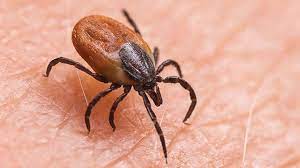Today’s Current Affairs: 28th Jul 2023 for UPSC IAS exams, State PSC exams, SSC CGL, State SSC, RRB, Railways, Banking Exam & IBPS, etc
Table of Contents
The Biological Diversity (Amendment) Bill 2021:

The Lok Sabha passed the contentious Biological Diversity (Amendment) Bill 2021.
- Biodiversity refers to the variety of life forms that exist on the planet.
Biological Diversity (Amendment) Bill, 2021:
- The Bill modifies the classification of entities and activities that require intimation, while also introducing exemptions to certain cases.
- The Bill suggests that approval will be required before the actual grant of the IPR, not during the application process.
- It seeks to exempt registered AYUSH medical practitioners and people accessing codified traditional knowledge, among others, from giving prior intimation to State biodiversity boards for accessing biological resources for certain purposes.
- The Bill removes the applicability of benefit sharing requirements from research, bio-survey, and bio-utilisation.
- The Bill, on the other hand, decriminalizes these offenses and introduces fines ranging from one lakh to fifty lakh rupees instead
Gulf Stream : Could Collapse

A recent study suggests the Gulf Stream system could collapse as soon as 2025.
- The Gulf Stream is a swift and warm ocean current that flows along the eastern coast of North America and crosses the Atlantic Ocean towards Europe.
- It originates in the Gulf of Mexico and is primarily formed by the convergence of warm waters from the Caribbean Sea and the Gulf of Mexico. It then travels northward along the eastern coast of the United States.
- It follows a north-eastward path across the western North Atlantic Ocean.
- The current carries warm water from the tropics (around 25 to 28°C or 77 to 82°F) to higher latitudes.
- The Gulf Stream is several hundred kilometres wide and can flow at an average speed of about 2.5 meters per second.
- However, its speed can vary depending on the location and other factors.
- The current is also very deep, extending to depths of up to 1,000 meters.
UK-India Young Professionals Scheme:

The British Government recently announced the opening of the second ballot of the Young Professional Scheme for Indian citizens.
- Young Professionals Scheme was conceived as part of an India-U.K. Migration and Mobility MoU signed in May 2021 and was announced in November at the G20 summit in Bali.
- It was formally launched in February 2023.
- It will permit up to 3,000 of their degree-holding citizens aged between 18 and 30 to live and work in each other’s countries for two years.
- This scheme makes India the first visa-national country to benefit from the scheme.
- It allows Indian citizens between 18 and 30 years old to live and work in the UK for up to 2 years.
- It will enable candidates to enter the UK at any time while their visa is valid and leave and return anytime during their stay.
- A person must be selected in the India Young Professionals Scheme ballot before they can apply for a Young Professionals Scheme visa.
- To be eligible for the India Young Professionals Scheme visa,
- You have to be an Indian national aged between 18 and 30 years.
- You must have a bachelor’s degree or above.
- You must have 2,530 pounds in savings.
- You must not have any children under the age of 18 who live with you or whom you are financially supporting.
Conjunctivitis : Multiple Cases

Amid heavy rainfall in Delhi and nearby areas over the past few weeks, multiple cases of conjunctivitis are being reported in the National Capital Region.
- Conjunctivitis, commonly known as Pink Eye, is an infection or inflammation of the transparent membrane that covers the eyelid and eyeball.
- This membrane is called the conjunctiva.
- When small blood vessels in the conjunctiva become swollen and irritated, they’re more visible.
- This is what causes the whites of the eyes to appear reddish or pink.
- It can be caused by viruses, bacteria or by allergies.
- Both bacterial and viral conjunctivitis are highly contagious, while allergic conjunctivitis is not.
- It usually occurs through direct or indirect contact.
- Direct transmission happens through droplets from the cough or sneeze of an infected person or through hand-to-eye contact.
- Indirectly, it can spread via shared personal items like towels, makeup, pillows or contact lenses.
- Most common signs are redness, swelling and itching in the eyes.
- The eyes can also feel watery during the start of the flu.
- For the treatment of conjunctivitis, one needs to use a combination of medicines.
- One of the most useful treatments is using artificial tears or even any lubricating eye drops; these can help the infected person to maintain moisture.
Scrub typhus:

The Kerala Health department has issued an alert against scrub typhus as fresh cases of the disease have been reported from Kalath and District Court wards in Alappuzha municipality.
- Scrub typhus is a life-threatening infection caused by Orientia tsutsugamushi bacteria which is a major public health threat in South and Southeast Asia.
- It spreads to people through bites of infected chiggers (larval mites).
- The most common symptoms of scrub typhus include fever, headache, body aches, and sometimes rash.
- Scrub typhus should be treated with the antibiotic doxycycline.
- Doxycycline can be used in persons of any age.
- There is no vaccine available for this disease.
- It will not spread from person to person.
- India is one of the hotspots with at least 25% of the disease burden.
- Typhus fevers are a group of diseases caused by bacteria that include epidemic typhus, scrub typhus, and murine typhus.
- Epidemic typhus: It is caused due to Rickettsia prowazeki and it is spread to people through contact with infected body lice.
- Scrub typhusis: It caused due to Orientia tsutsugamushi and spread by chiggers.
- Murine typhus: It is caused due to Rickettsia typhi spread by fleas. It occurs in tropical and subtropical climates around the world
Silvopasture Systems:

In light of the global deterioration of natural resources and forests, silvopasture systems offer a relevant solution to deforestation trends.
- Silvopasture system is an ancient and proven practice that harmoniously integrates trees, forage and livestock on the same land.
- This system buffer against temperature and wind extremes, providing a favourable living environment for livestock.
- The trees on silvopasture lands act as natural carbon sinks, sequestering significantly five-10 times more carbon then pastures without trees, all while maintaining or enhancing productivity.
- The extensive root systems of trees within silvopasture plots contribute to nutrient cycling, improved soil stability and quality, while effectively combating erosion.
- Also, this system combine trees and livestock on the same land, silvopasture can play a vital role in reversing the negative trend of deforestation for pasture land.
- It also regulates local climatic conditions, buffering against temperature and wind extremes, providing a favourable living environment for livestock.
- Soil infiltration rates in silvopasture systems surpass those of open pastures, enhancing water storage potential.
PM-DevINE Scheme:

The Union Ministry for the Ministry of Development of North Eastern Region provided recent updates on the Prime Minister’s Development Initiative for North Eastern Region (PM-DevINE).
- The PM-DevINE scheme as a Central Sector scheme, was introduced as a part of the Union Budget 2022-23.
- The Cabinet granted approval for the PM-DevINE scheme on 12th October 2022.
- It has been granted 100% Central funding, ensuring that resources are directly allocated to the development initiatives.
- It will be implemented by Ministry of Development of North-East Region.
- Objectives of PM-DevINE:
- Infrastructure Development: In line with the spirit of PM GatiShakti, PM-DevINE aims to fund infrastructure projects in a cohesive manner, ensuring seamless connectivity and accessibility across the NER.
- Supporting Social Development Projects: Recognizing the unique needs and challenges of the NER, the scheme endeavors to support social development projects that address critical issues and improve the overall quality of life for the region’s inhabitants.
- Empowering Youth and Women: PM-DevINE seeks to create livelihood opportunities specifically targeting the youth and women of the NER, enabling them to participate actively in the region’s development and progress.
- Budget Allocation:
- The scheme received an initial allocation of Rs. 1500 crore in the Union Budget 2022-23.
- Over the 4-year period from 2022-23 to 2025-26, which aligns with the remaining years of the 15th Finance Commission period, the scheme has an overall outlay of Rs. 6,600 crore.
- A state-wise, project-wise list of projects approved during FY 2022-23 has been laid out, with each project tailored to address the specific needs of the respective states.
Bharat Mandapam : International Exhibition-cum-Convention Centre

Prime Minister Narendra Modi inaugurated the International Exhibition-cum-Convention Centre (IECC) complex, which has been christened Bharat Mandapam.
- This monumental project, developed as a national endeavor at an estimated cost of approximately Rs 2,700 crore, aims to showcase and promote India as a global business destination.
- During the grand opening ceremony, Prime Minister Modi unveiled two remarkable items – the G-20 coin and G-20 stamp.
- The significance of these unveilings reinforces India’s growing role in international affairs, solidifying its position as a key player in global economic and diplomatic arenas.
- The IECC complex sprawls across an extensive campus area of approximately 123 acres, making it India’s largest Meetings, Incentives, Conferences, and Exhibitions (MICE) destination.
- The convention centre is equipped with state-of-the-art facilities, including multiple meeting rooms, lounges, auditoriums, and an amphitheater, designed to host large-scale international exhibitions, trade fairs, conferences, and prestigious events.
PESA Draft Rules : Jharkhand

Recently, the Jharkhand government published draft rules for public consultation to implement PESA in the state.
- The Provisions of the Panchayats (Extension to Scheduled Areas) Act, commonly known as PESA, plays a crucial role in ensuring self-governance and empowerment for tribal communities residing in Scheduled Areas.
- PESA, enacted in 1996, aims to empower tribal communities living in Scheduled Areas through their own systems of self-government.
- It recognizes their traditional rights over natural resources, providing them with a platform to govern themselves.
- To ensure equitable representation and inclusivity, the draft rules have mandated eight standing committees to operate under the gram sabhas.
- Among these, the Education and Social Justice Committee will work towards the economic upliftment of Scheduled Castes, Scheduled Tribes, and weaker sections, including specially-abled and primitive tribes.
- The draft rules emphasize gender and tribal representation within the gram sabhas.
- At least 50% of the members in the gram sabhas must be women, promoting women’s participation in decision-making processes.
- Additionally, a minimum of 40% of the members must belong to Scheduled Tribe (ST) communities, ensuring adequate representation and participation of tribal communities.
JUPITER-3 : Private Satellite To Space

SpaceX, led by visionary entrepreneur Elon Musk, is set to make history once again by launching the world’s largest private satellite to space on July 27.
- The satellite, named JUPITER-3 and developed by Maxar Technologies, is a breakthrough in the field of communications satellites, boasting impressive size and cutting-edge technology.
- SpaceX’s Falcon Heavy rocket, known for its triple-booster design, will carry the JUPITER-3 satellite into space.
- This upcoming launch will signify the Falcon Heavy’s seventh mission, gaining widespread attention since its inaugural flight in 2018.
- The rocket has proven to be a reliable workhorse in the aerospace industry.
- JUPITER-3 is not just any ordinary satellite; it is the largest commercial communications satellite ever built.
- Developed by Maxar Technologies in Palo Alto, California, this satellite represents a major leap in satellite technology.
- One of the primary aims of JUPITER-3 is to double the capacity of Maxar Technologies’ satellite fleet with an additional 500 Gbps.
- This substantial increase in capacity will enable the company to better serve customers, especially in regions where cable and fiber connectivity are unavailable or unreliable, such as in remote areas.
- The JUPITER-3 satellite will cater to various communication needs.
- Its applications include supporting in-flight Wi-Fi, maritime connections, enterprise networks, backhaul for Mobile Network Operators (MNOs), and Community Wi-Fi solutions across North and South America.




